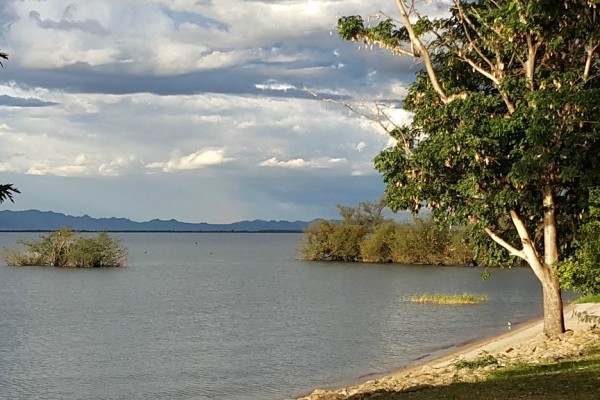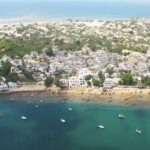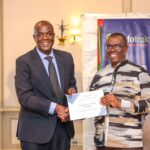Tana River County, a sprawling gem in Kenya’s former Coast Province, is home to 15 administrative wards across three constituencies. Covering 35,376 square kilometers and hosting a population of over 315,943 (2019 Kenya Census), this county blends riverine landscapes with untapped economic potential. For Kenyan business professionals, understanding these wards—from Bura’s pastoral plains to Garsen’s coastal edge—offers a roadmap to a region ripe for investment.
Tana River County: A Coastal Frontier
Tana River County stretches across Kenya’s eastern landscape, bordered by Garissa to the north, Isiolo to the northwest, Lamu to the northeast, Kilifi to the southeast, Taita Taveta to the south, and Kitui to the west. Named after the mighty Tana River, its three sub-counties—Bura, Garsen, and Galole—divide into 15 wards, each with an MCA steering local priorities. With 63,399 registered voters (IEBC 2022), Tana River’s consumer base, though spread thin, is dynamic and growing.
The county’s economy, valued at over KSh 10 billion annually (county estimates), hinges on pastoralism—over 1.5 million livestock—alongside irrigation farming and fishing. Governor Godhana’s focus on water infrastructure and security aligns with Vision 2030, making Tana River’s wards micro-markets worth exploring. Here’s the full ward breakdown.
Full List of Wards in Tana River County by Constituency
Tana River’s 15 wards span three constituencies, each with distinct economic vibes. Below, they’re laid out with insights into what drives them.
Bura Constituency
Population: ~100,000 (est.). A northern pastoral and agro-hub.
- Chewele Ward
- Profile: Rural, livestock focus near Garissa border.
- Business Angle: Meat supply or solar solutions.
- Hirimani Ward
- Profile: Pastoral, small markets.
- Business Angle: Fodder farming or microfinance.
- Bangale Ward
- Profile: Trading center, agro-pastoral base.
- Business Angle: Retail or farm inputs.
- Sala Ward
- Profile: Rural, livestock and trade.
- Business Angle: Livestock markets or mobile banking.
- Madogo Ward
- Profile: Peri-urban, trade growth near Tana River.
- Business Angle: Consumer goods or logistics.
Garsen Constituency
Population: ~120,000 (est.). A coastal and riverine mix.
- Kipini East Ward
- Profile: Coastal, fishing and trade.
- Business Angle: Seafood processing or eco-tourism.
- Garsen South Ward
- Profile: Rural, farming along Tana River.
- Business Angle: Irrigation farming or farm supplies.
- Kipini West Ward
- Profile: Coastal, small markets.
- Business Angle: Fishing gear or consumer goods.
- Garsen Central Ward
- Profile: Trading hub, Garsen Town center.
- Business Angle: Retail or logistics.
- Garsen West Ward
- Profile: Pastoral, trade growth.
- Business Angle: Livestock trade or solar energy.
- Garsen North Ward
- Profile: Rural, farming and livestock.
- Business Angle: Agro-processing or microfinance.
Galole Constituency
Population: ~95,000 (est.). A central agro-pastoral zone.
- Kinakomba Ward
- Profile: Rural, farming near Hola.
- Business Angle: Crop exports or farm inputs.
- Mikinduni Ward
- Profile: Pastoral, small markets.
- Business Angle: Meat trade or solar solutions.
- Chewani Ward
- Profile: Riverine, irrigation potential.
- Business Angle: Irrigation tech or consumer goods.
- Wayu Ward
- Profile: Rural, livestock and trade.
- Business Angle: Fodder production or mobile banking.
Economic Drivers of Tana River’s Wards
Tana River’s wards fuel a KSh 10 billion+ economy rooted in pastoralism and agriculture. Livestock—1.5 million cattle, goats, and camels—generate KSh 6 billion yearly (county data). Irrigation farming along the Tana River, producing rice and mangoes in wards like Garsen South and Chewani, adds KSh 2 billion. Fishing—over 1,000 tonnes annually from Kipini East and West—contributes KSh 1 billion, while trade in urban wards like Garsen Central and Madogo chips in KSh 1 billion.
Key stats:
- Livestock: 70% of households own animals, per 2019 Census.
- Farming: 5,000+ hectares irrigated—yields up 10% since 2020.
- Population Density: 9 people per km², with Hola at 5,000+ residents.
The Tana River’s 1,000+ km flow supports six wards, while the Garissa-Nairobi road cuts travel (620 km) to 10 hours.
Business Opportunities Across Tana River’s Wards
Tana River’s 15 wards offer diverse prospects for 2025. Here’s where to jump in:
Livestock and Agro-Processing
- Target Wards: Chewele, Sala, Garsen West, Mikinduni.
- Opportunities: Meat processing, fodder farming, or leather tanning.
- Why: Livestock exceeds local markets by 20%—value addition’s untapped.
Irrigation and Agriculture
- Target Wards: Garsen South, Chewani, Kinakomba, Madogo.
- Opportunities: Rice milling, mango exports, or drip irrigation.
- Why: 5,000+ hectares irrigated—only 30% processed locally.
Fishing and Seafood Ventures
- Target Wards: Kipini East, Kipini West, Garsen North.
- Opportunities: Cold storage or fish exports.
- Why: 1,000 tonnes of fish yearly—70% sold raw, losing KSh 200 million.
Retail and Consumer Markets
- Target Wards: Garsen Central, Bangale, Madogo.
- Opportunities: Supermarkets, tech shops, or FMCG hubs.
- Why: Urban wards see 5% consumer growth yearly.
Challenges Facing Tana River’s Wards
Tana River’s wards face hurdles that sharp businesses can tackle:
- Infrastructure: 8% of roads are paved—rural wards like Wayu lag in trade.
- Flooding: Tana River floods (1,500 mm rain peak) cut yields 15% yearly in Garsen South.
- Water Scarcity: Dry wards like Hirimani rely on boreholes—50% fail in drought.
These gaps open niches—logistics firms, flood barriers, or water tech could turn challenges into cash. In 2023, 30% used improved water sources, with Garsen Central at 70%—a rural-urban divide to bridge.





